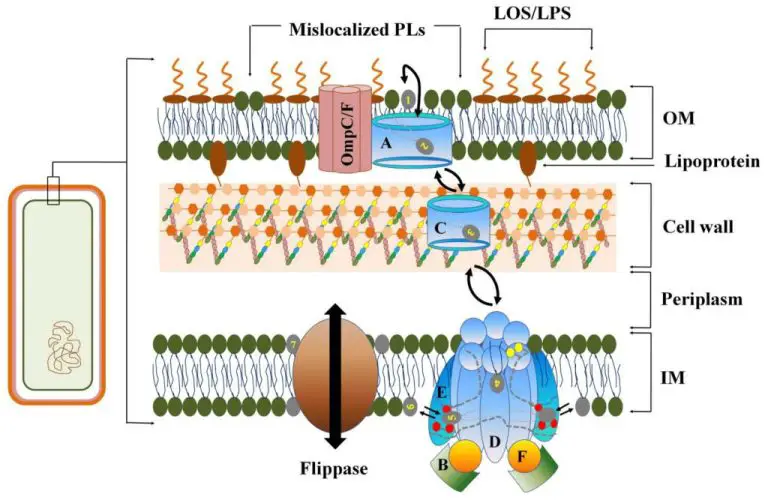What Are The Different Fruit Scents?
This article provides an overview of some of the most popular fruit scents and their distinguishing characteristics. Scents can evoke memories and emotions connected to the fruit, providing a pleasant sensory experience. The fruits covered here include banana, strawberry, apple, orange, grape, pineapple, peach, and pear. While not an exhaustive list, these fruits offer a diverse range of sweet, tart, and tropical aromas commonly used in perfumes, candles, air fresheners, and food flavorings.
Banana
The banana plant produces a sweet, tropical scent that is instantly recognizable. As the fruit ripens, it gives off an aroma reminiscent of pineapple and pear. The primary scent compounds that create the banana fragrance are isoamyl acetate and isopentyl acetate. These fruity esters are what gives ripe bananas their distinctive candy-like smell.
The scent is so iconic that “banana” has become its own distinctive fragrance profile used in candies, desserts, and scented products. Banana fragrance oils and flavorings rely heavily on isoamyl acetate to reproduce that sweet, tropical aroma. The next time you peel a ripe banana, take a moment to inhale the unique, nostalgic scent.
Strawberry
Strawberries have a sweet, floral scent that is quite distinct. When you smell a fresh strawberry, your nose detects esters like methyl anthranilate and furaneol that give strawberries their characteristic fruity smell. The scent is described as flowery, with a hint of honey and jam. It’s a clean, light and invigorating aroma that many people find uplifting. The first whiff often evokes memories of spring time when lush, red strawberries are in season. Because strawberries are so popular in desserts and candies, the scent may trigger nostalgic thoughts of strawberry ice cream on a hot summer day or strawberry tarts fresh from the oven. The strawberry fragrance is widely used in perfumes, lotions and aroma therapy products thanks to its sweet, fresh and vibrant qualities.
Apple
Apples are known for their sweet, fruity scent that is crisp and refreshing. The smell comes from the skin of the apple, not the flesh inside. Apples contain an aromatic compound called farnesene which gives it its characteristic fragrance. When an apple is cut or bruised, enzymes start breaking down the farnesene and releasing that fruity scent we recognize instantly. The scent differs slightly between apple varieties. Red and Golden Delicious apples tend to be the most fragrant, while Granny Smiths and Fuji apples have milder scents.
The apple aroma is often associated with feelings of autumn, fruit orchards, and freshly baked apple pies. It’s a nostalgic scent that reminds many people of farm stands, picking apples in the fall, or cozy kitchens filled with the smell of baking desserts. The fruity apple fragrance is universally recognized and loved. It’s even been commercialized and used in air fresheners, candles, skin care products, and perfumes to help capture that fresh picked apple scent.
Orange
Oranges are perhaps the most iconic citrus fruit, known for their bright orange color and refreshingly sweet yet tart flavor. When it comes to their fragrance, oranges give off a lively, citrusy scent that is universally recognized. The natural oils in orange peels contain a compound called limonene that imparts that signature fresh, citrusy orange aroma. It’s an invigorating scent that evokes sunshine and tropical climates. The orange fragrance is often described as sweet yet tart, much like the taste of the fruit itself. It’s a vibrant, zesty scent that uplifts the senses.
Orange essential oil is commonly used in fragrances, soaps, candles and other aromatherapy products to harness the energizing citrus aroma. The scent of fresh oranges is often added to cleaning products as well for its clean and refreshing odor. Overall, the orange fragrance is one that instantly conjures up happy thoughts of fresh squeezed orange juice, sweet segments of orange slices, and bright sunny days.
Grape
Grapes have a sweet, vinous scent that is instantly recognizable. The source of this fruity aroma is a chemical compound called methyl anthranilate. Interestingly, while over 400 compounds contribute to the smell of grapes, methyl anthranilate plays an outsized role – it’s responsible for up to 98% of the characteristic grape aroma.
The concentration of methyl anthranilate varies between green, red, and black grapes, producing slight differences in their respective smells. However, they all evoke a rich, sweet grapeyness prized in grapes and grape-flavored products.
Beyond fresh grapes, methyl anthranilate is an important scent compound in grape juice, jams and jellies, candies, and artificial grape flavors. So next time you catch a whiff of that familiar grape scent, you likely have methyl anthranilate to thank!
Pineapple
Pineapple has a sweet, tropical scent that is instantly recognizable. When you think of summer and tropical destinations, the flavor and aroma of pineapple likely comes to mind. Pineapples contain an enzyme called bromelain which gives the fruit its unique fragrance. As the pineapple ripens, more bromelain develops which increases the fruit’s sweet smell. The rich, honey-like pineapple scent is a result of esters combining with the sugars and acids naturally present in the fruit. Unlike some other fruits, pineapple’s aroma translates directly to its taste. Biting into a fresh, ripe pineapple provides a true pineapple experience – you taste exactly what you smell! The powerful tropical essence of pineapple makes it a popular scent for candles, air fresheners, and beauty products. Pineapple fragrance evokes feelings of warmth, summer, vacation and happiness.
Peach
Peaches have a wonderfully sweet and floral scent that evokes images of sunny orchards and ripe, juicy fruit. When you catch a whiff of fresh peach, it’s like you’re instantly transported to a warm summer day. The fragrance is soft yet succulent, with notes of honey and nectar. Unlike some other fruit scents, peach tends to be less tart or acidic. Instead, it’s a mellow, smooth, and aromatic smell that perfectly captures the essence of a ripe peach. The scent lingers in a delicate and appetizing way that makes your mouth water. Whether it’s from a peach-scented perfume, lotion or candle, the aroma is unmistakable. It’s a fruity scent that reminds us of carefree afternoons, sweet treats, and the abundant harvest of peak peach season.
Pear
Pears have a wonderfully sweet and delicate scent that is subtle yet unmistakable. When you cut into a ripe pear, you are met with an aroma that is fresh and floral. The fragrance comes from compounds like ethyl acetate, ethyl butyrate, and hexanol which impart fruity, sweet, green notes.
Of all the popular fruits, pears contain one of the most delicate and elegant scents. It is not as strong as other fruits like banana or pineapple, but has a gentle perfumed quality. The scent often reminds one of a spring breeze or a flower garden, with hints of rose and apple blossom.
Next time you encounter a basket of pears, pause for a moment to inhale their perfume. Let the delicate scent delight your senses as you anticipate the sweet, juicy flesh that lies within. The aromatic compounds in pears may be subtle, but make no mistake, their fragrance is unforgettable.
Conclusion
Fruit scents come in a wide variety of aromas. As we explored, some of the most popular fruit scents include banana, strawberry, apple, orange, grape, pineapple, peach, and pear. Each of these fruits has a distinct and recognizable scent profile. Bananas give off a sweet, creamy aroma while strawberries are fresh and floral. Apples have a crisp, bright scent and oranges are citrusy and zesty. Grapes emit a light, fruity perfume and pineapples have a tropical, juicy fragrance. Peaches are sweet yet tart and pears have an elegant, subtle scent.
The scent of fruit comes from volatile compounds known as esters that are created as the fruit ripens. These esters give each fruit its characteristic smell that we can easily recognize. Our sense of smell is very sensitive and evocative – just a whiff of a fruit scent can trigger memories and emotions. Fruit fragrances are commonly used in perfumes, candles, air fresheners and more to impart a sweet, refreshing impression. Understanding and appreciating the nuances between fruit scents allows us to more fully experience these gifts of nature.




